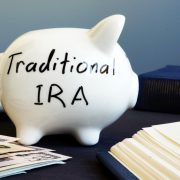Best Practices for Real Estate IRAs
Real estate IRA investing is becoming more popular every year. As the housing market continues to recover, more and more people are learning about the many benefits of real estate IRA investing, including tax efficiency, control, flexibility, leverage and diversification.
Here are six of the most important things to keep in mind when it comes to real estate IRA investing.
1. Separation
Maintain a strict separation between your real estate IRA properties and activities and your personally-owned real estate. For example, while you may be able to use your own rental real estate for your own convenience while the property isn’t rented out, you cannot make personal use of real estate owned in a real estate IRA for any reason. If you do so, and you get caught, the IRS could disallow the entire IRA, making you liable for taxes and penalties that were preventable.
2. Keep Contribution Limits in Mind
Keep annual contribution limits in mind when doing liquidity planning. For example, new contributions to real estate IRAs, excluding rollovers, are limited to $5,500 per year. If you know you are going to have to replace a $30,000 roof on a property owned within your IRA within three years, you’re going to have to free up some additional cash from somewhere, or borrow it. If the $5,500 annual contribution won’t cut it for you, then you might want to use a SEP or solo 401(k) plan to hold real estate, instead of an IRA.
3. Taxes
Don’t forget about unrelated debt-financed income tax. Yes, the money you contribute to your real estate grows tax-deferred (or tax free, in the case of Roth real estate IRAs). But that’s not true for money other people contribute to your real estate IRA! If you bought your real estate IRA property using leverage, or borrowed money, the IRS will assess a tax on any growth attributable to the borrowed money.
For example, if you have $100,000 in your IRA and you borrowed $50,000 to buy a house, so you have $150,000 in your IRA – and you get 10 percent appreciation, or $15,000, the IRS will assess income tax on a third of the gain, or on $5,000.
4. Mind Your RMDs
Keep required minimum distributions in mind. Make sure you keep enough liquid in the real estate IRA to make your RMD. If you get to April 1 of the year after the year in which you turn 70 ½, and all you have is real estate in your IRA, you are going to run into RMD trouble. Remember, if you don’t take your RMD, the IRS imposes a substantial penalty of 50 percent of the RMD that you were supposed to take, but didn’t.
5. Consider Converting
Have some cash in the bank? You may consider converting your real estate IRA to a Roth IRA. In this case, provided you can leave the assets in your Roth for at least five years. This converts all your growth and income in the IRA from tax-deferred to tax-free. What’s more, it also forever relieves you of the responsibility of taking RMDs from the account. This lets you stay fully invested – potentially increasing returns – until you decide you want the money. This puts you on your timeline, not the government’s.
6. Use IRA Funds for Fees
Pay property-related expenses, fees, management fees, repairs, property taxes and even light bulbs out of your real estate IRA funds. Don’t pay them out of your personal funds. This helps you maintain a strict separation between your personal assets and your IRA assets and avoid accidentally disqualifying your real estate IRA.
American IRA, LLC is a nationally-recognized authority on real estate IRA investing. With an office Asheville, North Carolina, we work with self-directed retirement account owners nationwide. For more information, visit us online at www.americanira.com, or call us at 877-7500-IRA(472).





